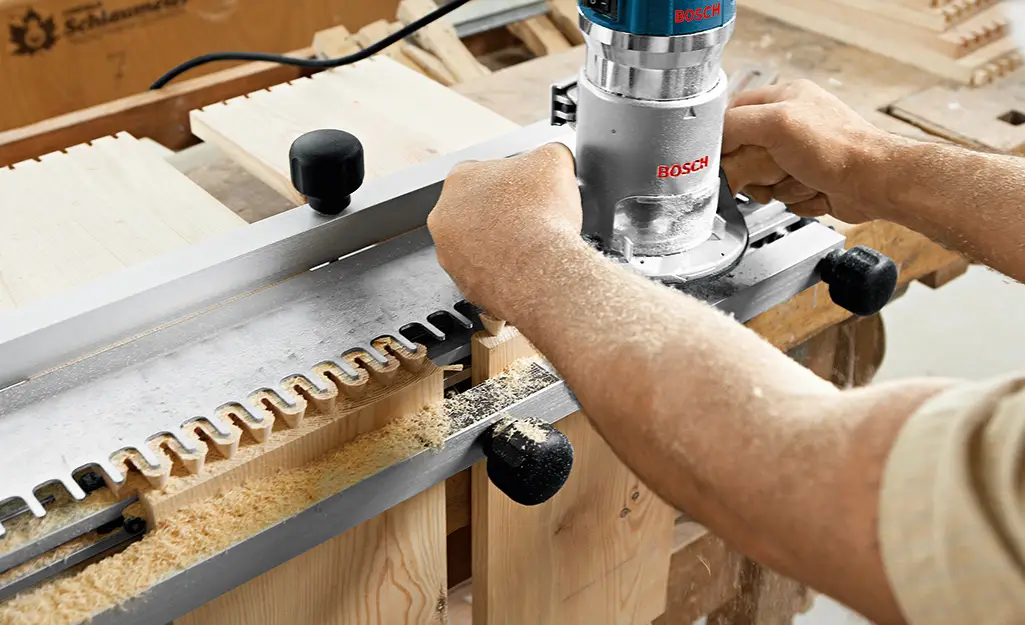When it comes to woodworking and DIY projects, having the right tools can make all the difference. One such tool that has gained popularity among hobbyists and professionals is the trim router. But what exactly is a trim router, and why should you consider adding one to your toolkit?
A trim router is a compact, versatile tool designed for precision work. It excels in tasks like edge trimming, creating decorative edges, and even joinery applications. Understanding the various uses of a trim router can significantly enhance your woodworking skills and project outcomes.
In this blog post, we will explore the purpose of a trim router in detail. We’ll cover its definition, key features, common uses, safety tips, how to choose the right model and maintenance practices. By the end of this article, you’ll have a comprehensive understanding of how a trim router can elevate your woodworking projects.
Understanding Trim Routers
Definition of a Trim Router
A trim router is a small, handheld power tool that is primarily used for trimming and shaping wood. Unlike standard routers, which are larger and more powerful, trim routers are designed for precision tasks that require finesse rather than brute force.
The main difference between a trim router and a standard router lies in their size and intended use. While standard routers are often used for heavy-duty tasks like cutting large grooves or shaping edges on thick materials, trim routers are perfect for lighter applications, such as trimming laminate edges or creating decorative profiles on furniture.
Components of a Trim Router
To fully appreciate the functionality of a trim router, it’s essential to understand its key components:
- The base is the part of the router that rests on the workpiece. It provides stability and control during operation.
- The motor powers the router and determines its speed and cutting ability. Most trim routers have motors ranging from 1 to 2.5 horsepower.
- The collet holds the router bit in place. It’s crucial for ensuring that the bit remains secure during operation.
- This feature allows users to set the cutting depth, which is vital for achieving precise results.
Each of these components plays a significant role in the overall functionality of the trim router, making it a valuable tool for any woodworker.
Key Features of Trim Routers

Power and Speed
Trim routers typically have power ratings between 1 and 2.5 horsepower, with RPM (revolutions per minute) ranges that can vary widely. Most models operate between 20,000 to 30,000 RPM.
The power of a trim router affects its performance and efficiency. A more powerful router can handle tougher materials and achieve cleaner cuts. However, for most light-duty tasks, a router with lower power is sufficient. Understanding the power requirements for your specific projects will help you choose the right trim router.
Size and Portability
One of the standout features of trim routers is their compact design. This makes them incredibly portable and easy to handle, especially in tight spaces.
The small size of a trim router allows for greater maneuverability, making it ideal for detailed work. Whether you’re working on intricate furniture designs or simply trimming edges, the portability of a trim router can be a game-changer.
Ease of Use
Trim routers are designed with user-friendliness in mind. Many models come equipped with features such as soft grip handles and adjustable speed settings.
These features are particularly beneficial for beginners who may be intimidated by more complex tools. The ease of use also appeals to professionals who appreciate the efficiency and comfort that a trim router provides during extended use.
Common Router Trimmer Uses
Edge Trimming
One of the primary uses of a trim router is edge trimming. This involves smoothing and finishing the edges of various materials, including wood, laminate, and even plastic.
Techniques for Trimming Edges
- Straight Edges: Use a straight bit to trim the edges of plywood or laminate sheets.
- Curved Edges: Employ a flush trim bit to follow the contour of a template for more intricate designs.
The benefits of using a trim router for edge work include achieving clean, professional-looking finishes and the ability to work with a variety of materials.
Creating Decorative Edges
Trim routers are also excellent for creating decorative edges on furniture and cabinetry.
Types of Decorative Edges
- Beveled Edges: A simple angle cut that adds a modern touch.
- Roundover Edges: Softens the corners for a more finished look.
- Cove Edges: Creates a concave profile that adds depth and interest.
These decorative edges can elevate the aesthetic appeal of your projects, making them stand out.
Grooving and Recessing
Another common application for trim routers is grooving and recessing. This technique involves cutting grooves into the material, which can be used for various purposes, such as joining pieces of wood or creating channels for wiring.
Applications in Cabinetry and Furniture Making
- Cabinet Doors: Grooves can be cut to fit panels securely.
- Drawer Slides: Recesses can be created to accommodate sliding mechanisms.
Using a trim router for these applications allows for precise cuts that enhance the overall quality of your work.
Joinery Applications
Trim routers are also valuable for joinery applications. They can be used to create various types of joints, such as dado and rabbet joints.
Advantages Over Traditional Joinery Methods
- Precision: Trim routers provide more accurate cuts compared to hand tools.
- Speed: They significantly reduce the time required to create joints.
This efficiency makes trim routers a preferred choice for both amateur and professional woodworkers.
Safety Tips When Using a Trim Router

Personal Protective Equipment (PPE)
Safety should always be a priority when using power tools. Here are some recommended PPE items:
- Safety Glasses: Protect your eyes from flying debris.
- Hearing Protection: Reduce noise exposure during operation.
- Dust Mask: Prevent inhalation of wood dust.
Best Practices
To ensure safe handling and operation of your trim router, consider the following tips:
- Read the Manual: Familiarize yourself with the tool’s features and safety instructions.
- Maintain a Clean Workspace: Keep your work area tidy to avoid accidents.
- Secure Your Workpiece: Always clamp down materials to prevent movement during cutting.
By following these safety tips, you can enjoy a safer woodworking experience.
Choosing the Right Trim Router
Factors to Consider
When selecting a trim router, there are several factors to keep in mind:
- Power: Choose a model that suits your project needs.
- Features: Look for user-friendly options like variable speed settings and soft grips.
- Brand Recommendations: Research reputable brands known for quality and reliability.
Popular Models on the Market
Here’s a brief overview of some top-rated trim routers:
| Model | Power (HP) | RPM Range | Weight (lbs) | Price Range |
|---|---|---|---|---|
| Makita RT0701C | 1.25 | 10,000-30,000 | 3.9 | $150-$200 |
| DeWalt DWP611 | 1.25 | 16,000-27,000 | 6.0 | $160-$220 |
| Bosch PR20EVS | 1.0 | 16,000-35,000 | 5.0 | $130-$180 |
This table highlights key specifications to help you make an informed decision.
Maintenance and Care for Trim Routers
Regular Maintenance Practices
To keep your trim router in top condition, consider these maintenance tips:
- Clean After Use: Remove dust and debris from the router and bits.
- Check the Collet: Ensure it’s secure and free from damage.
- Lubricate Moving Parts: Regular lubrication can extend the life of your tool.
Troubleshooting Common Issues
Even the best tools can encounter problems. Here are some common issues and how to fix them:
- Router Won’t Start: Check the power source and ensure the switch is functioning.
- Inconsistent Cuts: Inspect the router bit for wear and replace if necessary.
- Excessive Vibration: Ensure the collet is tightened and the bit is properly installed.
By addressing these issues promptly, you can maintain the performance of your trim router.
Conclusion
Understanding the purpose of a trim router is essential for anyone looking to enhance their woodworking skills. From edge trimming to creating decorative profiles, this versatile tool can significantly improve the quality of your projects.
We encourage you to explore the various applications of a trim router and consider adding one to your toolkit. Have you used a trim router in your projects? Share your experiences or ask any questions you may have in the comments below!




